Roman Klokov
Self-Supervised Dual Contouring
May 28, 2024



Abstract:Learning-based isosurface extraction methods have recently emerged as a robust and efficient alternative to axiomatic techniques. However, the vast majority of such approaches rely on supervised training with axiomatically computed ground truths, thus potentially inheriting biases and data artifacts of the corresponding axiomatic methods. Steering away from such dependencies, we propose a self-supervised training scheme for the Neural Dual Contouring meshing framework, resulting in our method: Self-Supervised Dual Contouring (SDC). Instead of optimizing predicted mesh vertices with supervised training, we use two novel self-supervised loss functions that encourage the consistency between distances to the generated mesh up to the first order. Meshes reconstructed by SDC surpass existing data-driven methods in capturing intricate details while being more robust to possible irregularities in the input. Furthermore, we use the same self-supervised training objective linking inferred mesh and input SDF, to regularize the training process of Deep Implicit Networks (DINs). We demonstrate that the resulting DINs produce higher-quality implicit functions, ultimately leading to more accurate and detail-preserving surfaces compared to prior baselines for different input modalities. Finally, we demonstrate that our self-supervised losses improve meshing performance in the single-view reconstruction task by enabling joint training of predicted SDF and resulting output mesh. We open-source our code at https://github.com/Sentient07/SDC
VoroMesh: Learning Watertight Surface Meshes with Voronoi Diagrams
Aug 28, 2023Abstract:In stark contrast to the case of images, finding a concise, learnable discrete representation of 3D surfaces remains a challenge. In particular, while polygon meshes are arguably the most common surface representation used in geometry processing, their irregular and combinatorial structure often make them unsuitable for learning-based applications. In this work, we present VoroMesh, a novel and differentiable Voronoi-based representation of watertight 3D shape surfaces. From a set of 3D points (called generators) and their associated occupancy, we define our boundary representation through the Voronoi diagram of the generators as the subset of Voronoi faces whose two associated (equidistant) generators are of opposite occupancy: the resulting polygon mesh forms a watertight approximation of the target shape's boundary. To learn the position of the generators, we propose a novel loss function, dubbed VoroLoss, that minimizes the distance from ground truth surface samples to the closest faces of the Voronoi diagram which does not require an explicit construction of the entire Voronoi diagram. A direct optimization of the Voroloss to obtain generators on the Thingi32 dataset demonstrates the geometric efficiency of our representation compared to axiomatic meshing algorithms and recent learning-based mesh representations. We further use VoroMesh in a learning-based mesh prediction task from input SDF grids on the ABC dataset, and show comparable performance to state-of-the-art methods while guaranteeing closed output surfaces free of self-intersections.
Discrete Point Flow Networks for Efficient Point Cloud Generation
Jul 20, 2020



Abstract:Generative models have proven effective at modeling 3D shapes and their statistical variations. In this paper we investigate their application to point clouds, a 3D shape representation widely used in computer vision for which, however, only few generative models have yet been proposed. We introduce a latent variable model that builds on normalizing flows with affine coupling layers to generate 3D point clouds of an arbitrary size given a latent shape representation. To evaluate its benefits for shape modeling we apply this model for generation, autoencoding, and single-view shape reconstruction tasks. We improve over recent GAN-based models in terms of most metrics that assess generation and autoencoding. Compared to recent work based on continuous flows, our model offers a significant speedup in both training and inference times for similar or better performance. For single-view shape reconstruction we also obtain results on par with state-of-the-art voxel, point cloud, and mesh-based methods.
Probabilistic Reconstruction Networks for 3D Shape Inference from a Single Image
Aug 20, 2019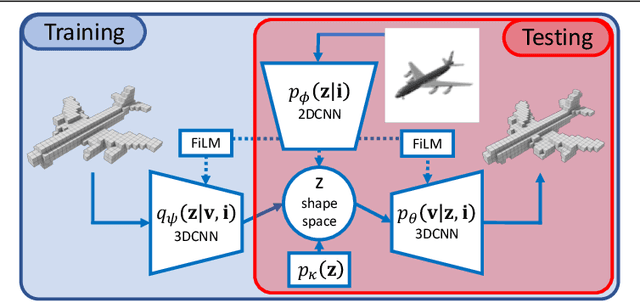

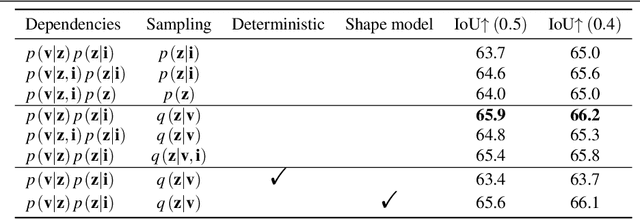

Abstract:We study end-to-end learning strategies for 3D shape inference from images, in particular from a single image. Several approaches in this direction have been investigated that explore different shape representations and suitable learning architectures. We focus instead on the underlying probabilistic mechanisms involved and contribute a more principled probabilistic inference-based reconstruction framework, which we coin Probabilistic Reconstruction Networks. This framework expresses image conditioned 3D shape inference through a family of latent variable models, and naturally decouples the choice of shape representations from the inference itself. Moreover, it suggests different options for the image conditioning and allows training in two regimes, using either Monte Carlo or variational approximation of the marginal likelihood. Using our Probabilistic Reconstruction Networks we obtain single image 3D reconstruction results that set a new state of the art on the ShapeNet dataset in terms of the intersection over union and earth mover's distance evaluation metrics. Interestingly, we obtain these results using a basic voxel grid representation, improving over recent work based on finer point cloud or mesh based representations.
Large-Scale 3D Shape Reconstruction and Segmentation from ShapeNet Core55
Oct 27, 2017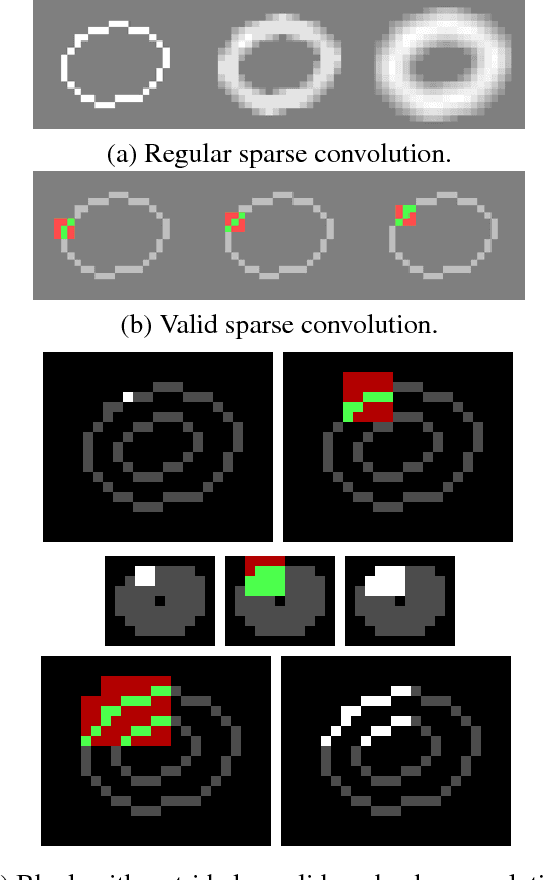
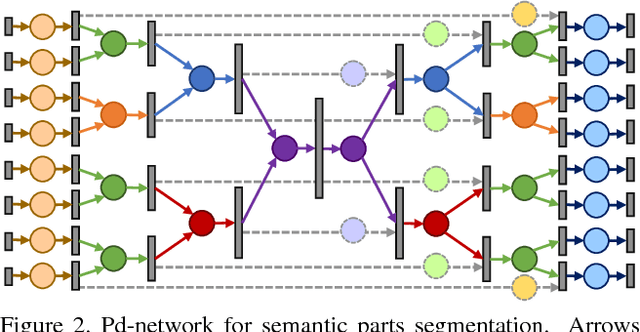

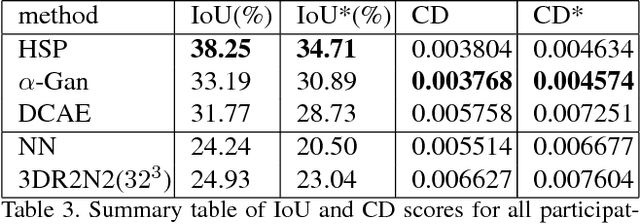
Abstract:We introduce a large-scale 3D shape understanding benchmark using data and annotation from ShapeNet 3D object database. The benchmark consists of two tasks: part-level segmentation of 3D shapes and 3D reconstruction from single view images. Ten teams have participated in the challenge and the best performing teams have outperformed state-of-the-art approaches on both tasks. A few novel deep learning architectures have been proposed on various 3D representations on both tasks. We report the techniques used by each team and the corresponding performances. In addition, we summarize the major discoveries from the reported results and possible trends for the future work in the field.
Escape from Cells: Deep Kd-Networks for the Recognition of 3D Point Cloud Models
Oct 26, 2017



Abstract:We present a new deep learning architecture (called Kd-network) that is designed for 3D model recognition tasks and works with unstructured point clouds. The new architecture performs multiplicative transformations and share parameters of these transformations according to the subdivisions of the point clouds imposed onto them by Kd-trees. Unlike the currently dominant convolutional architectures that usually require rasterization on uniform two-dimensional or three-dimensional grids, Kd-networks do not rely on such grids in any way and therefore avoid poor scaling behaviour. In a series of experiments with popular shape recognition benchmarks, Kd-networks demonstrate competitive performance in a number of shape recognition tasks such as shape classification, shape retrieval and shape part segmentation.
 Add to Chrome
Add to Chrome Add to Firefox
Add to Firefox Add to Edge
Add to Edge